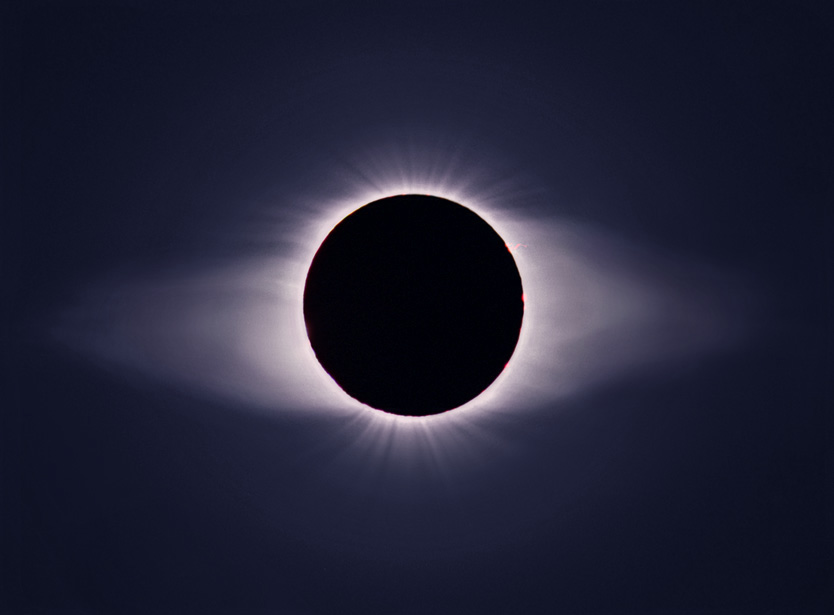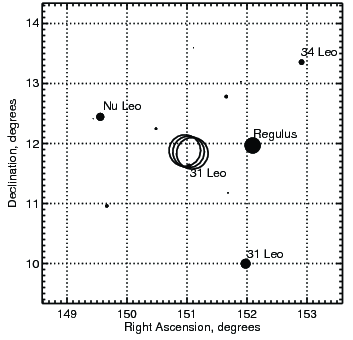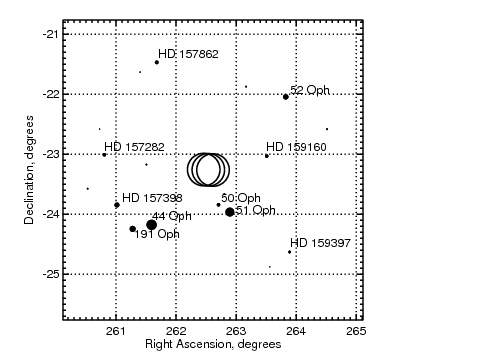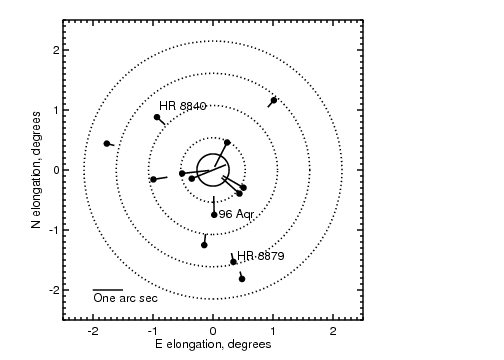
Courtesy Fred Espenak |
Eclipse Star Maps
and how to make them |

|

Courtesy Fred Espenak |
Eclipse Star Maps
and how to make them |

|
All star positions are given in coordinates for epoch 2000.
We are grateful to Hipparcos and the Simbad database for
this information.
|

Star map of the Dec. 14, 2020 solar eclipse. |
These maps are an adaptation of our existing star maps. Gravitational deflections are represented as radial lines centered on the Sun and are proportional to the amount of gravitational deflection expected. Two or three of the brightest stars in the field have also been labeled in each map.

Gravitational deflection map of the Mar. 09, 2016 solar eclipse. |
Because it is close to the Sun, Mercury is never very far away during a total eclipse. The table below shows the range of distances (in degrees) between Mercury and the Sun during the next few solar eclipses.
In 2020, Mercury comes within a 5 degree radius from the sun, which is depicted in the star map below.
Year
Distance (deg)
2012
8.4375466
2015
18.547277
2016
13.252403
2017
10.165003
2019
22.229893
2020
3.6501720  To download the .eps file click here.
To download the .eps file click here.